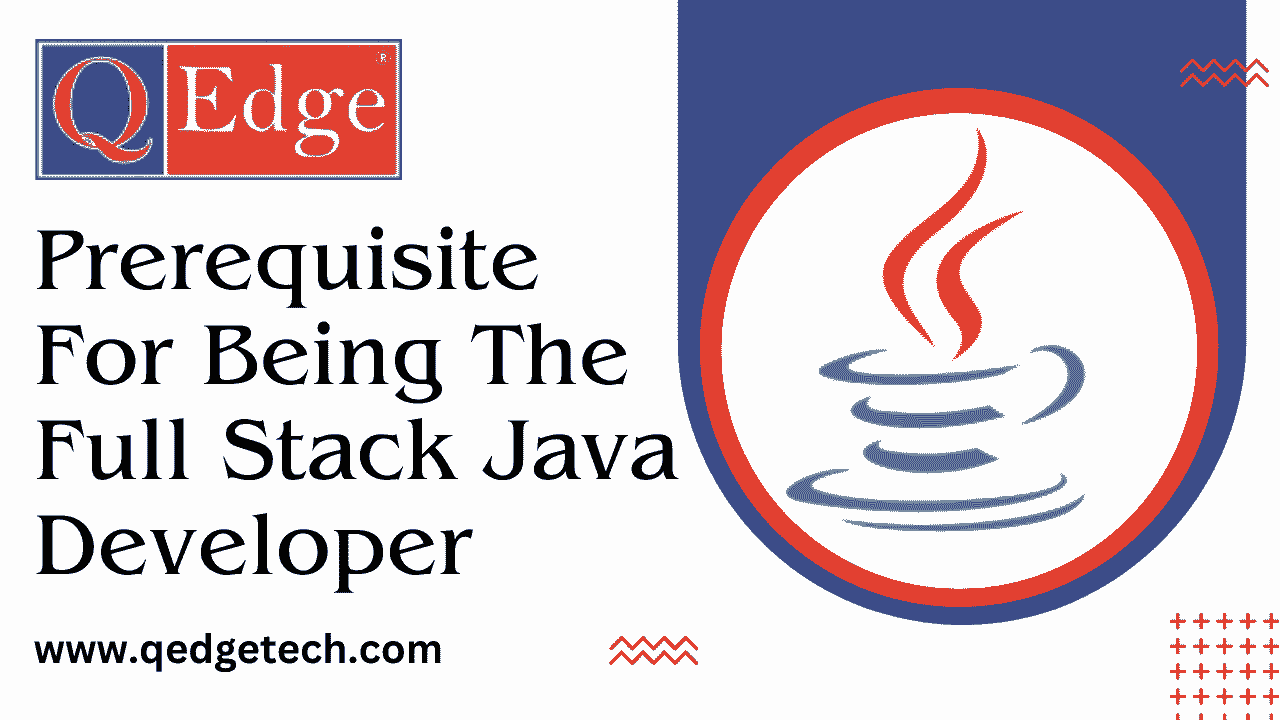Prerequisite For Being The Full Stack Java Developer

Introduction:
- As you can see, technology is developing daily, and as a result, the technical world will change at the same rate as the technology does.
- The technical employment will also change quickly as a result of the shifting requirements.
- If you go back five years, you will notice that it was quite simple to obtain employment with only a single programming language or piece of technology, and that you could hold onto that job for a long time without having to pick up new skills.
- However, being the newbies these days Knowing a little bit of C++, Java, or JavaScript may be all it takes for many of us to start out in the programming and web development fields, but that won’t be enough to break the ice in the future.
- Here, there are specialised teams consisting of tens or more individuals who work on specialised tasks like front-end development, which is handled by a different group of developers, and back-end development, which is authored by a different group of programmers known as server-side developers.
The reason behind these abrupt and severe changes:
In the highly competitive world of today, the following are the main causes of these significant changes:
- Because of the development of cutting-edge technology, user expectations have increased significantly.
- Users are becoming more demanding, and they require sophisticated interfaces.
- The emergence of this cutting-edge programming idea.
- Students’ ignorance of current and upcoming technological developments.
- These days, the majority of respectable, well-known businesses are searching for Full Stack Java Engineers.
- To create a completely effective web application, the majority of firms need someone with autonomous work experience and knowledge of both front-end and back-end technologies.
To become a Java Full Stack Developer, you need to have:
- One must be knowledgeable about both the front end and back end development processes for creating applications in order to work as a Java Full Stack developer.
- I’ll go over a few key courses in this article that will undoubtedly aid in your transition to full stack development.
- A minimal need is to be familiar with at least one frontend framework (such as Angular or React) and one backend framework (such as Spring or Spring Boot).
- Most of the time, HTML, CSS, and Java script will also be used in the frontend design process.
- Similarly, we can use technologies like Servlet, JSF, Weblogic, etc. to construct the backend application portion.
Regarding the other point, I also want to make the recommendation that Java developers course learn how to use tools like Docker, Jenkins, and Kubernetes.
In order to drive the application from a team and organisational viewpoint, it is expected of developers working for well-known organisations to be familiar with at least one of the aforementioned tools. Acquiring knowledge of these technologies may also provide you with an advantage over other full-stack developers.
Some businesses might also be searching for Java applications that integrate with the cloud.
I would strongly advise applicants who wish to pursue a career in this area to educate themselves about cloud computing platforms such as AWS, Azure, GCP, Heroku, or Openshift.
It is simply anticipated that by the middle of 2021, you will probably be creating Java-based cloud-native applications that require simultaneous concept deployment.
Having solid knowledge of cloud platforms is essential for full stack Java developers as it greatly aids in the deployment and development of cloud-based apps.
When applying for a job, having access to AWS or Azure technologies gives you an advantage over other full-stack Java developer course.
